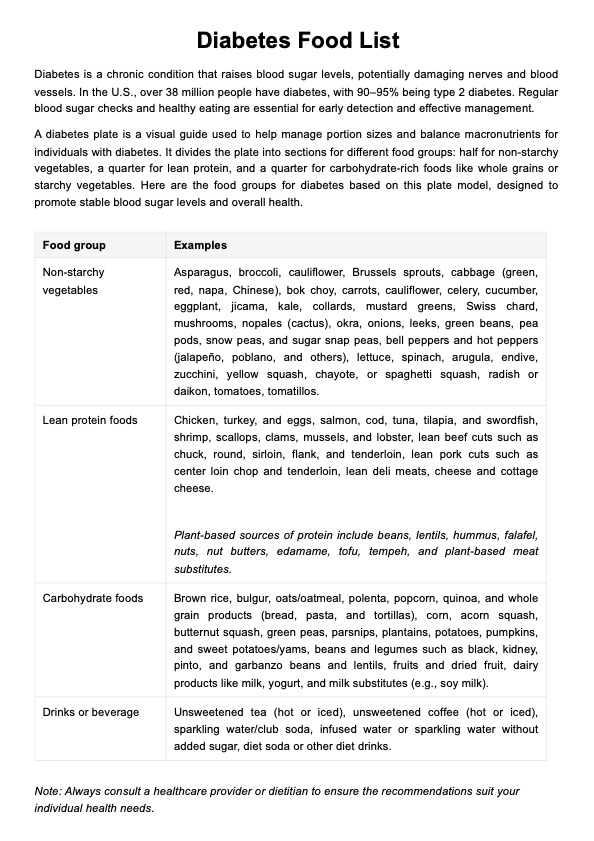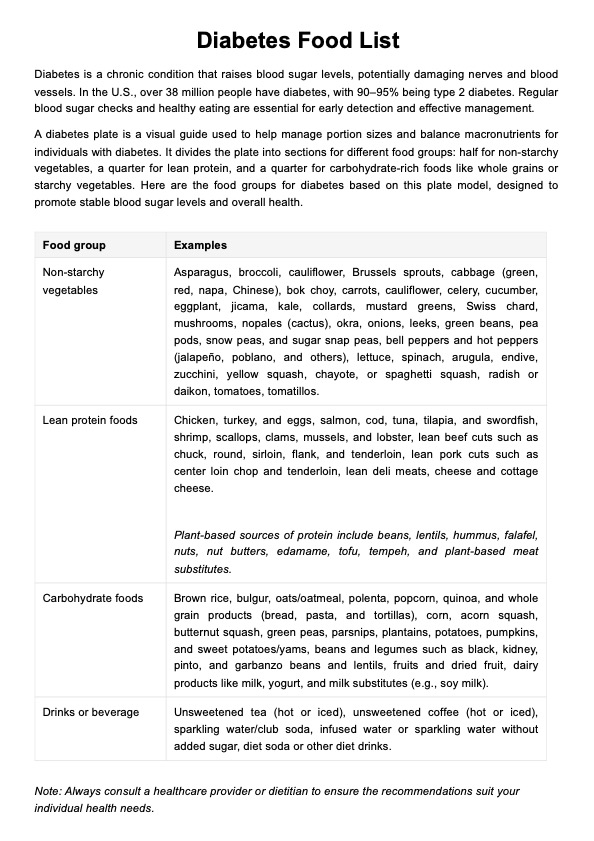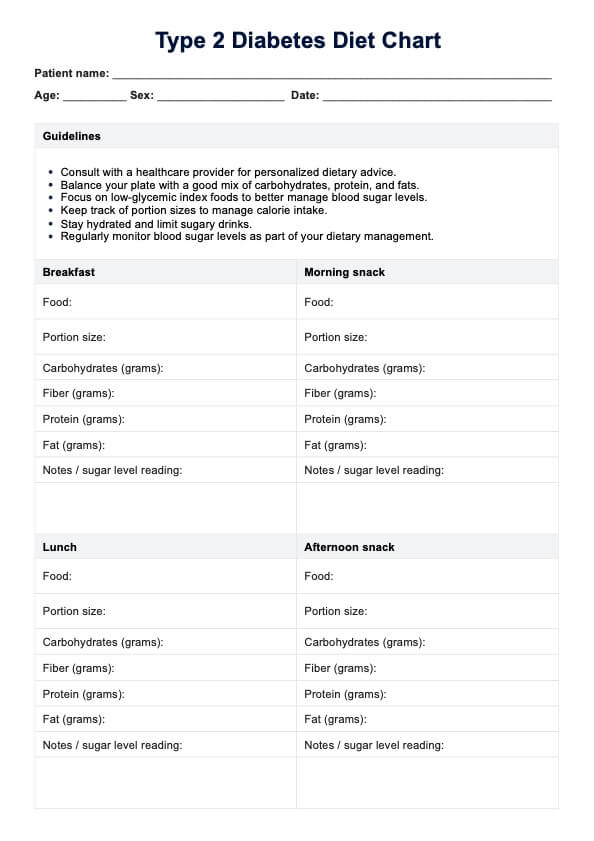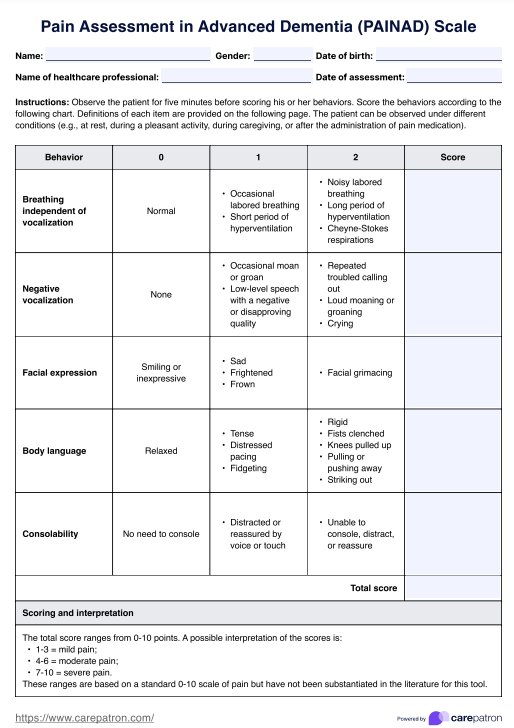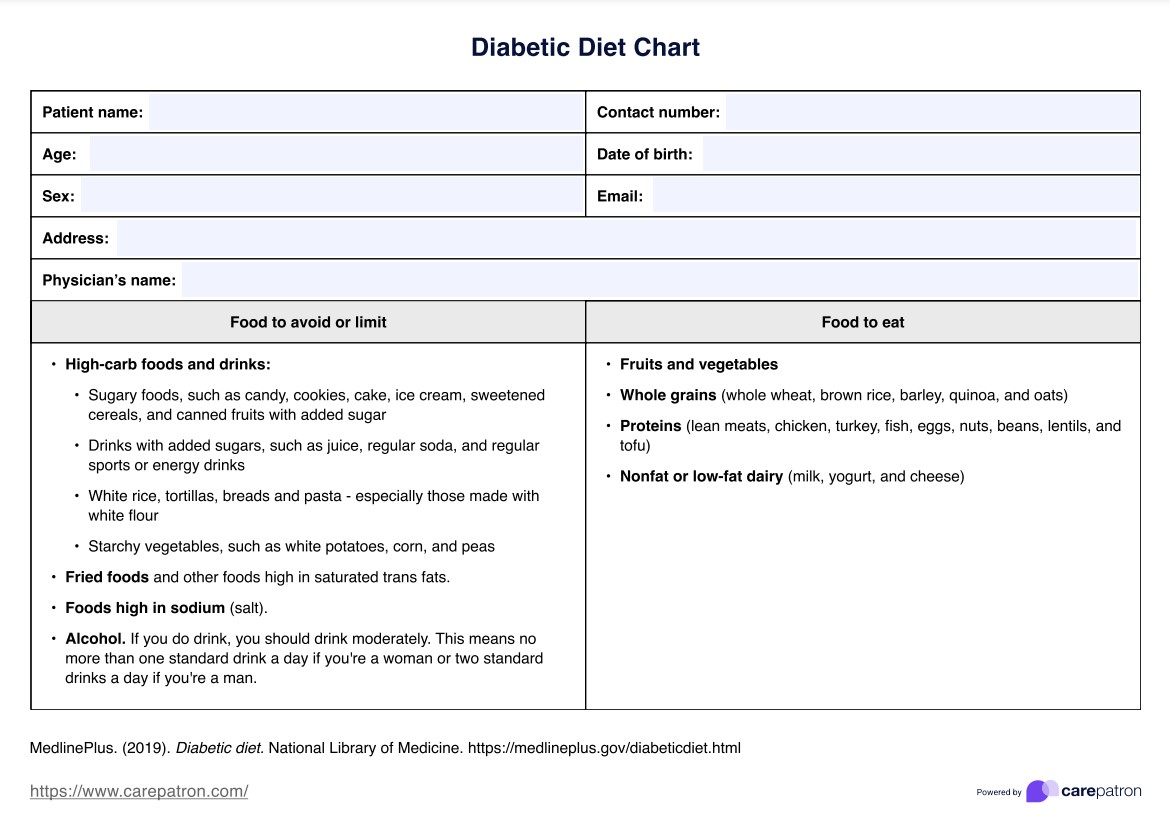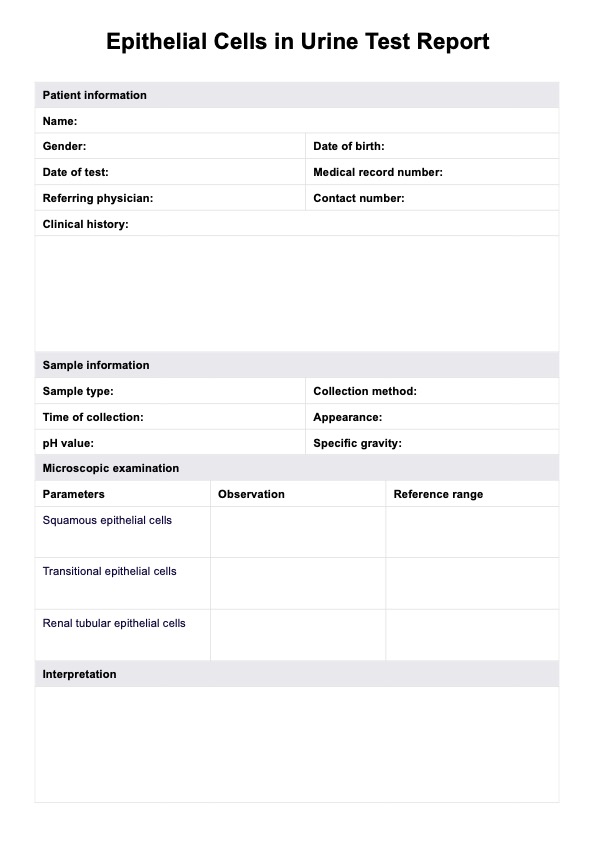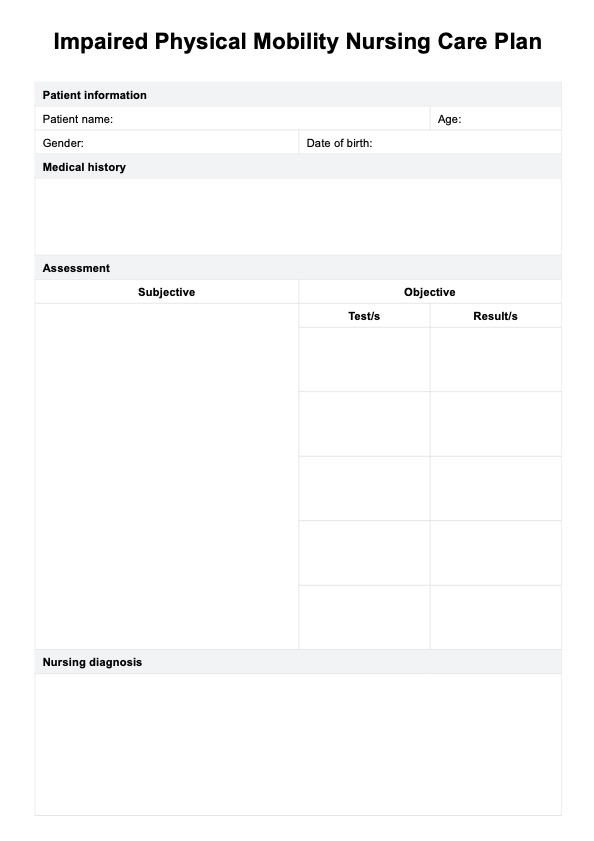Type 2 Diabetes Diet Food
Download the Type 2 Diabetes Food List to guide clients as they manage blood sugar levels and reap health benefits.


What is diabetes?
Diabetes is a chronic condition resulting from inadequate insulin production or ineffective insulin utilization (World Health Organization, 2024). It can raise one's blood sugar level and severely damage various body systems, particularly nerves and blood vessels.
In the United States, around 38 million individuals have diabetes, with approximately 90–95% being type 2 diabetes (American Diabetes Association, n.d.; Centers for Disease Control and Prevention, 2024). Diabetes doubles the risk of heart disease and stroke, occurring at a younger age, with prolonged diabetes increasing this risk further. It is categorized into three: type 1, type 2, and gestational diabetes (developed in pregnancy).
Type 1 diabetes arises from an autoimmune reaction that inhibits insulin production. It can be diagnosed at any age with rapid symptom onset and necessitates daily insulin intake for survival. In contrast, type 2 diabetes involves insulin inefficiency. It is commonly diagnosed in adults but increasingly in youth. Individuals may not exhibit noticeable symptoms (Centers for Disease Control and Prevention, 2024).
With the rising prevalence of type 2 diabetes, regularly checking blood sugar levels is crucial for detecting it early, especially among younger people. Making healthy food choices and eating healthy meals can significantly aid in managing the condition effectively.
Type 2 Diabetes Diet Food Template
Type 2 Diabetes Diet Food Example
What is a Type 2 Diabetes Food List?
Eating healthy can be a complex journey for people with diabetes. However, it doesn't have to be a road traveled alone. The Type 2 Diabetes Diet Food List is a comprehensive resource that empowers healthcare professionals and their patients to make informed, healthful food choices. This list is not just a compilation of foods. It's a guide to better health management through diet.
The Type 2 Diabetes Food List is about balance and making choices that help maintain stable blood sugar levels. It includes a variety of healthy foods rich in nutrients, low in saturated fats and sugars, and moderate in calories. The list categorizes foods into whole grains, lean proteins, healthy fats, abundant fruits, and non-starchy vegetables, providing a clear picture of what a diabetes-friendly plate should look like.
It's a way for healthcare professionals to educate and support patients with type 2 diabetes. It's about creating a sustainable lifestyle change that goes beyond temporary diets. The list is also adaptable, considering individual patient needs, preferences, and cultural food practices, making it a versatile resource in any healthcare setting.
What is a Type 2 Diabetes Food List?
Creating a healthy meal plan can be a challenging journey for people with diabetes. However, it doesn't have to be a road traveled alone. The Type 2 Diabetes Diet Food List is a comprehensive resource that empowers healthcare professionals and their patients to make informed, healthful food choices. This list is not just a compilation of foods. It's a guide to better health management through diet.
The Type 2 Diabetes Food List is about balance and making choices that help maintain stable blood glucose levels. It includes a variety of healthy foods rich in nutrients, low in saturated fats and sugars, and moderate in calories. The list includes examples like whole grains, lean proteins, healthy fats, abundant fruits, and non-starchy vegetables, providing a clear picture of what a diabetes-friendly plate should look like.
It's a way for you to educate and support patients with type 2 diabetes. It's about creating a sustainable lifestyle change that goes beyond temporary diets. The list is also adaptable, considering individual patient needs, preferences, and cultural food practices, making it a versatile resource in any healthcare setting.
How does the Type 2 Diabetes Diet Food List work?
The Type 2 Diabetes Food List is crucial for anyone managing this type of diabetes. It serves as a comprehensive guide to help patients understand which foods are beneficial for maintaining stable blood sugar levels and overall health. Follow the steps below to use our list:
Step 1: Download the list
Get a copy of the Type 2 Diabetes Food List by clicking the "Use Template" button to open a fillable version in the Carepatron platform. You can also select "Download" to get a printable PDF version.
Step 2: Introduce the list to the patient
Explain the purpose of the Type 2 Diabetes Food List to the patient. Emphasize its role in managing blood sugar levels and improving overall health. Ensure the patient understands that this list is a guide to help them make healthier food choices.
Go through each category on the list, explaining why certain foods are recommended and how they benefit diabetes management. Highlight the importance of choosing foods with low glycemic index, high fiber, and healthy fats.
Step 3: Assess dietary preferences and restrictions
Discuss with the patient their current nutritional habits, preferences, and any specific restrictions they might have. This step is crucial for tailoring the food list to suit their needs and tastes, making it more likely they will adhere to the recommendations.
Step 4: Add notes
We've provided a 'Notes' section for you in case you want to add more information or details based on your session with your client. If possible, offer tips on cooking methods that preserve the nutritional value of foods and advice on reading food labels while shopping. This guidance can help patients make informed choices when buying food for type 2 diabetes and create a healthy eating plan.
Step 5: Regularly follow-up and adjust
Schedule regular follow-ups to review the patient's progress and make any necessary adjustments. Encourage the patient to keep a food diary to track their eating habits and discuss any challenges they face.
When would you use this Type 2 Diabetes Diet Food List
The list's versatility makes it applicable in various clinical scenarios. Understanding when and how to use this form can significantly impact patients' ability to manage their condition effectively.
Initial diagnosis
The Type 2 Diabetes Food List is handy when a patient is diagnosed with type 2 diabetes. It is a foundational tool to educate them about dietary changes that can help manage their condition.
Regular health check-ups
During routine health check-ups, especially for patients with a history of diabetes or pre-diabetes, this form can be used to assess and adjust their current diet. It's an opportunity to reinforce healthy eating habits and make necessary modifications.
When patients experience blood sugar fluctuations
This food list can help patients who report frequent fluctuations in their blood sugar levels to identify and replace foods in their diet that may contribute to these variances.
Nutrition counseling sessions
In nutrition counseling, especially for diabetic patients, this can be a structured guide to discussing and planning a balanced diet. It can be used to set dietary goals and track progress.
Post-hospitalization diet planning
After a patient is discharged from the hospital, this can be used to plan their post-discharge diet, ensuring it aligns with their recovery and ongoing health management needs.
Benefits of using the diabetes food list
Using the Type 2 Diabetes Food List is crucial in managing the dietary aspect of diabetes care. The outcomes reflect how well a patient's food choices align with the recommended nutritional guidelines for managing Type 2 Diabetes.
- Improved blood sugar control: Adherence to the food list typically results in better blood sugar control. Regularly consuming foods from the list should lead to more stable blood sugar levels, a key indicator of effective diabetes management.
- Managed weight: Following the diet food list can also assist in weight management, an essential factor in controlling Type 2 Diabetes. A balanced diet, as outlined in the list, can help maintain a healthy weight.
- Enhanced overall health: Incorporating the recommended foods into a daily diet can improve overall health. This includes better cardiovascular health, reduced risk of diabetes-related complications, and enhanced energy levels.
Consistent use of the list can significantly improve blood sugar control, weight management, and overall well-being, crucial aspects of diabetes care. It offers a structured approach to meal planning and blood sugar control.
References
American Diabetes Association. (n.d.). Statistics about diabetes. https://diabetes.org/about-diabetes/statistics/about-diabetes
Centers for Disease Control and Prevention. (2024, May 15). Diabetes basics. https://www.cdc.gov/diabetes/about/?CDC_AAref_Val=https://www.cdc.gov/diabetes/basics/diabetes.html
World Health Organization. (2024, November 14). Diabetes. https://www.who.int/news-room/fact-sheets/detail/diabetes
Commonly asked questions
Eat healthy food and focus on a balanced diet with protein foods, lean meats, limited saturated fat, and minimal added sugar while maintaining a healthy weight.
Yes, shedding excess weight may improve blood sugar management and overall health outcomes.
Limiting saturated fat intake is beneficial as it can help reduce the risk of insulin resistance and cardiovascular complications associated with type 2 diabetes.
Monitoring blood sugar levels is essential for managing diabetes because it helps keep them within a healthy range and prevent complications like heart disease, kidney damage, and nerve problems. Regular checks also provide valuable insights into how diet, activity, and medications affect blood sugar, enabling better control.


